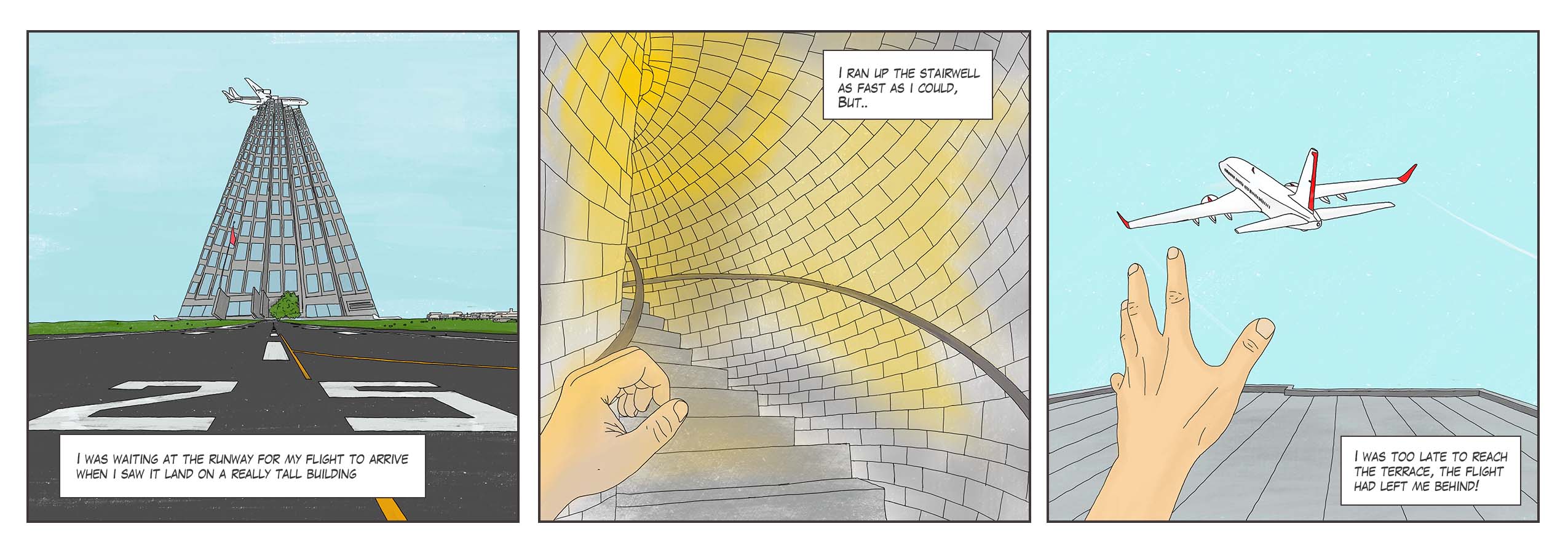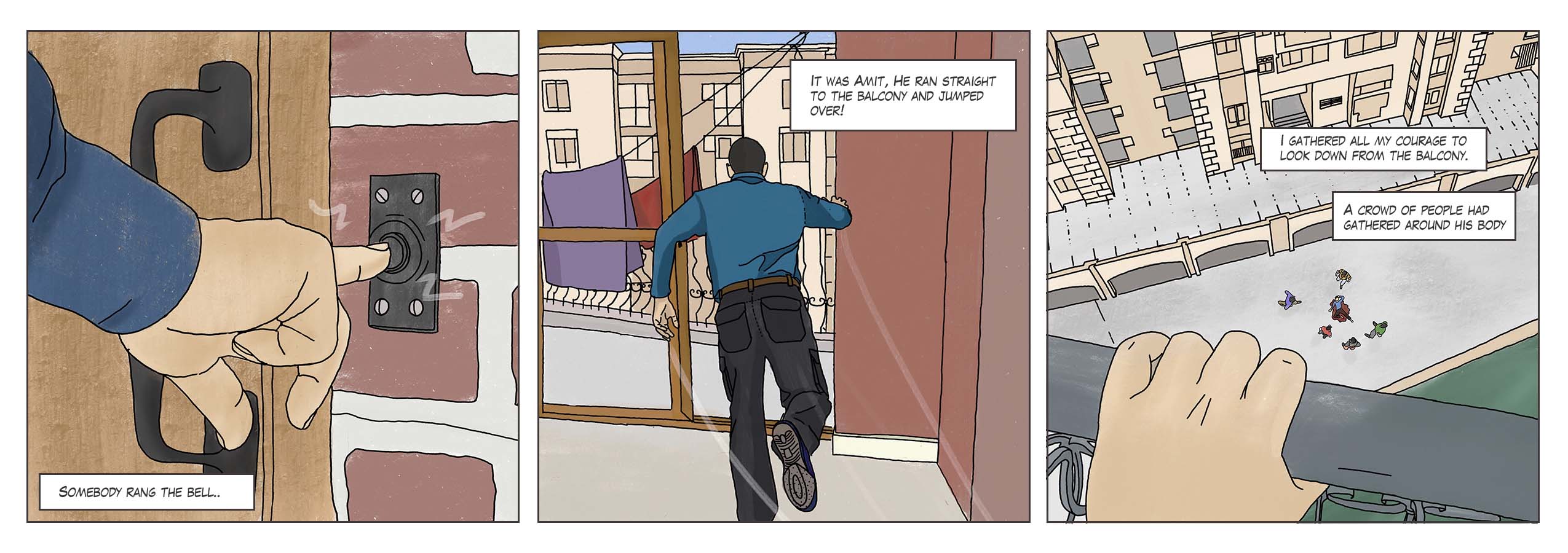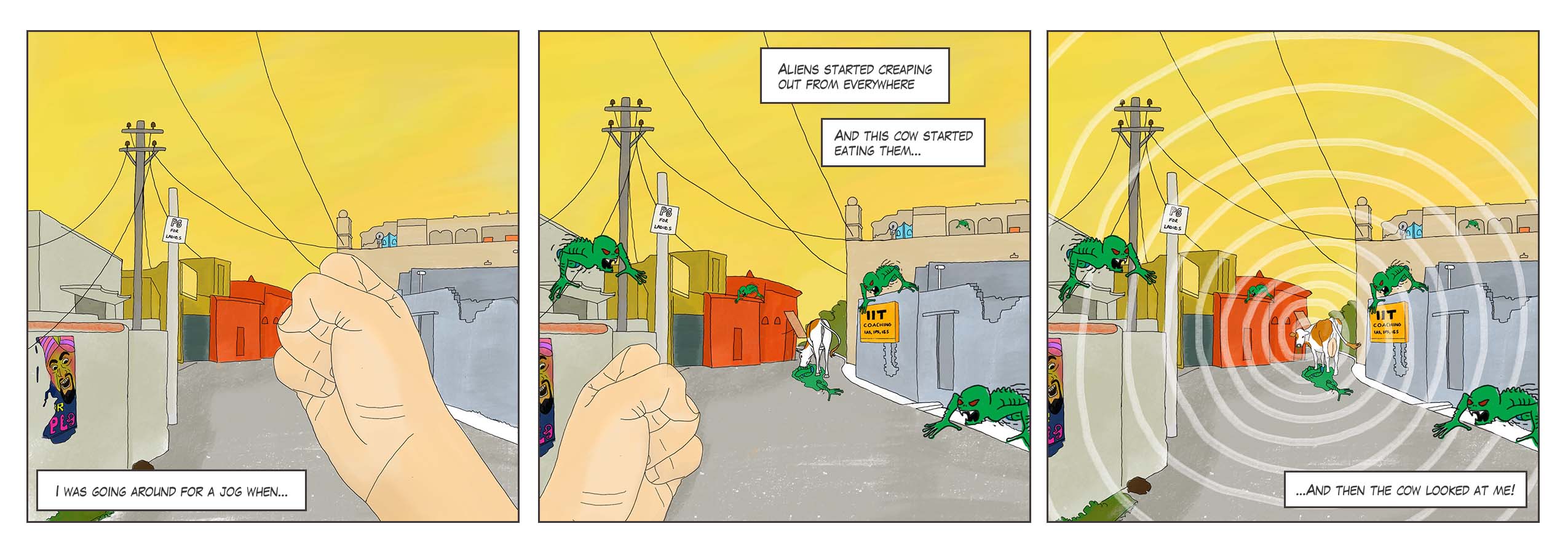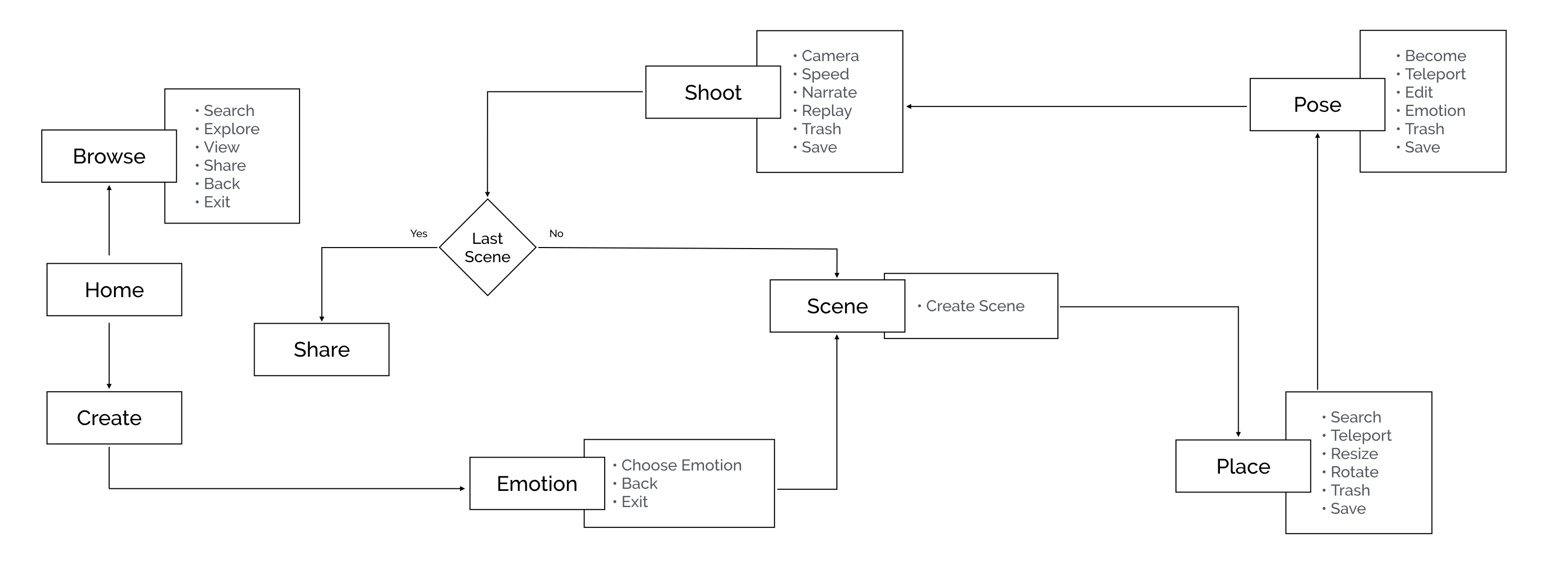Introduction
The advent of Virtual Reality opened a new challenge to content creators. The user was no longer restricted to a frame used to focus on a point of interest, creating a singular storyline beginning till end. VR let the user break out of that frame and exploring a single story in infinite possible ways, sometimes missing cues important to stitch the narrative together, then how do you direct a users attention to these cues without compromising the users ability to explore the world they're immersed in?
Everyone is a storyteller of their own sub-conscious, every night we go to bed and dwell into our mind to create multiple narratives we call dreams. It is always difficult to narrate a dream to others because of its nature of surreality and immersion.
Could the problem of telling a difficult story be solved by medium in which storytelling is hard?
Brief
Recreating dreams in virtual reality.
Research
Ergonomics of VR
Understanding the physical limitations of the human body was essential for designing a good experience for the virtual space. Here strain on the neck, physical limitation of reach, field of view, depth etc were explored and used to formulate content zones for the user.
Both seated & standing positions were explored on the above aspects and tested.
User Interface and Eyes
When the user interface is half a meters and closer it causes heavy strain on the eyes and is termed the "No No Zone". No interface must be placed in this region for prolonged duration. Three meters is about the right distance for a comfortable user interface. The stereo separation is almost nil after twenty meters and this reduces our ability to perceive the object in 3D.
Content & Body
The ergonomic constrains of the neck and head play an important role in placement of content in the virtual environment. In a seated position the user can move their heads vertically up comfortably 20° and maximum for about 60°. Vertically downwards 12° and maximum around 40°. Horizontally the head can move freely 77° and maximum for about 102°.
Content zones
Considering the ergonomic constraints above, the follow zones can be used to enrich the experience.
No No Zone - No content must be placed in the zone for a prolonged time.
Main Content Zone - The main content must be placed in this zone.
Peripheral Zone - Secondary content can be placed in the zone.
Curiosity Zone - This is an exploratory zone.
Dreams
A set of users were asked to recall any dream that they remembered. The setting was casual and friendly so that the narration would be free and full of expression. The goal was to see if the users got into the very details of dreams or they wanted to express the emotions they felt in the dream.
"The missed flight"
- Tanvi Baste, Reoccurring

"The Suicide Man"
- Vivek Jadon, Nightmare

"The Alien Eating Cow"
- Pooja Kishan, Nightmare

When asked to narrate their dreams. People described at length about how they felt and the intensity of the event that occurred. Rarely did they focus on the details of the environment. Emotions were the key focus. Then, recreation of these dreams must focus heavily on making the viewer feel what the dream felt like, with little focus on minute details.
Considerations
Lowpoly
Lowpoly with it obvious technical advantage of being processor friendly has a sub conscious effect on a user as well. As the poly count is reduced, the user stops looking for extreme details and focuses more on the main features. Therefore freeing the mind of the user to concentrate on the overall picture rather than the minute details.
Expressing Emotions
It takes a team of talented professionals in theatre to make you feel what they want you to feel. Environment Expression leverages the environment by using - Light, Colour and Cinematography to express emotions of a character or a setting. An example of the same is shown below using a character with a constant expression
Mind Trip
Mindtrip makes recreating dreams fun and easy. Automating complex tasks while making user feel fully in control. It works on a scene by scene basis, with each scene having stationary objects that express emotion through their environment. Each scene is broken into 3 phases - Place, Pose and Shoot.
Creating abstract, surreal and emotional recreation of dreams has never been this easy. Now share and enjoy a database of dreams.
Information Architecture

Recreating Dreams
Recreating dreams in Mind Trip is an easy 3 step process. Let's take an example to recreate and go through the entire process of building a dream Place, Pose, Shoot and Share.
The Alien Eating Cow : I was jogging when there was a sudden stampede. I didn't understand what was going on. There was a cow and there were aliens that were creeping out from buildings. The cow started eating the aliens and I was just looking at her. She then turned towards me, I got really scared and woke up!
Choose the Type
Choosing the type of the dream is based on the over all mood of the dream you had. The metaphor of a mask is used here to represent each emotion. Choosing and wearing a mask builds a basic environment according to the emotion chosen using light, color and sound.
Search & Place
Search any object by triggering the voice search command. Place the search result chosen and effortlessly duplicate and randomise the object. You can also resize, trash and edit the objects in this mode. Both movement with analog stick to mimic walking in the virtual space and teleportation for quick movement around the scene is provided to the user.
Pose & Emotion
Posing a character has never been this easy. Just choose the character you want to become and watch them mimic your movement. When the pose it right just set it and it stays. Joint point can also be moved to pose the character in case the pose is complex. After the pose is set, choose an emotion of the character using the analog stick. The lights, color and sound are automatically set by MindTrip for you. Emotions and poses can be duplicated on other characters.
Shoot & Narrate
You are the camera! You can change your speed, focus, scene etc. When you come close the character the camera automatically sets as per the emotion when looked at. The environment effects also come alive while you start your shoot. Record, replay, edit and trash your recording. Tell your story through narration while recording to add another layer of emotion and understanding.